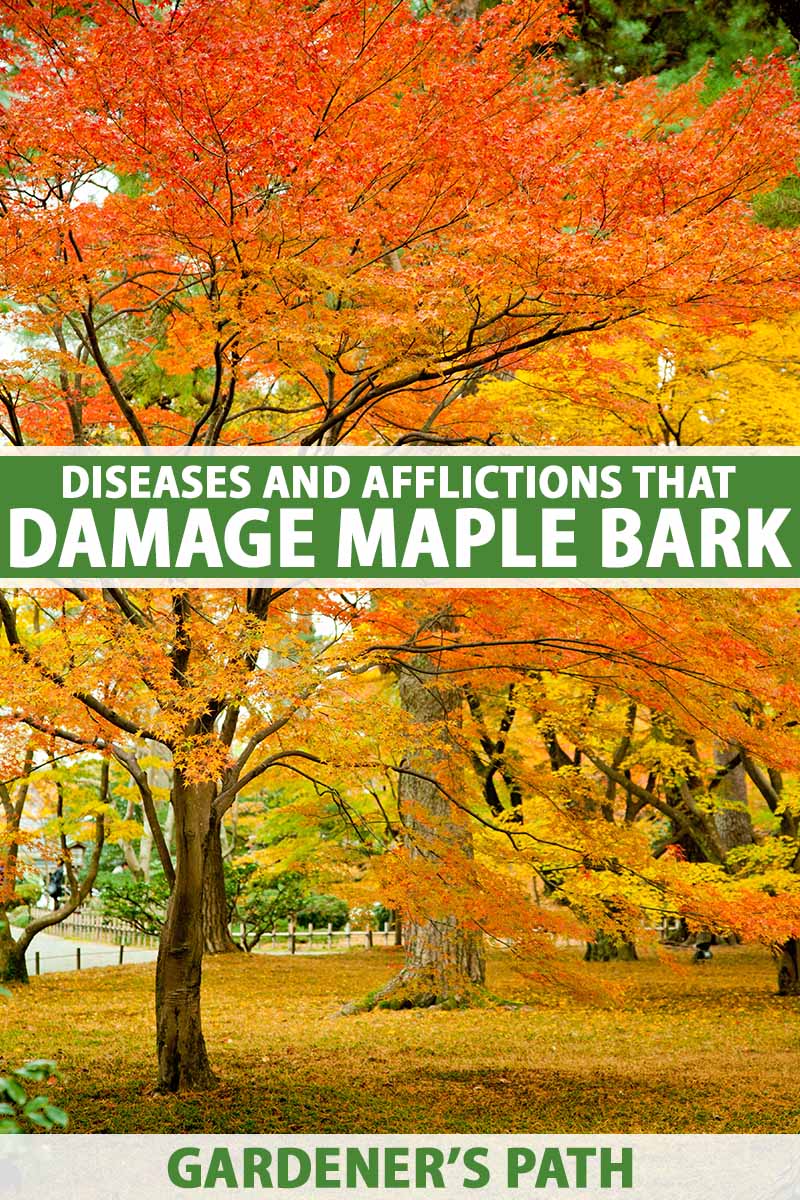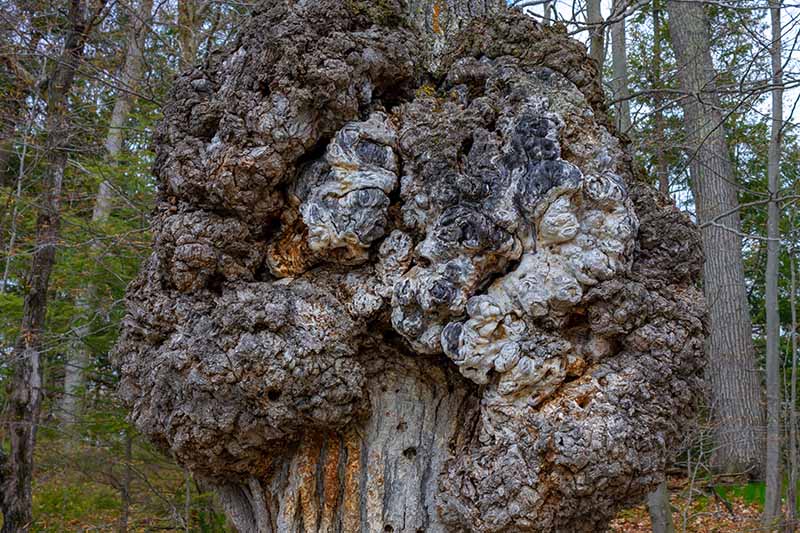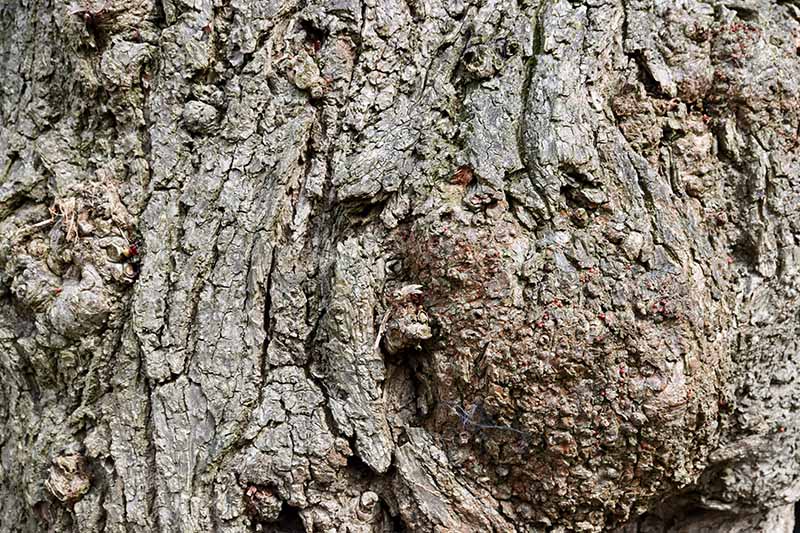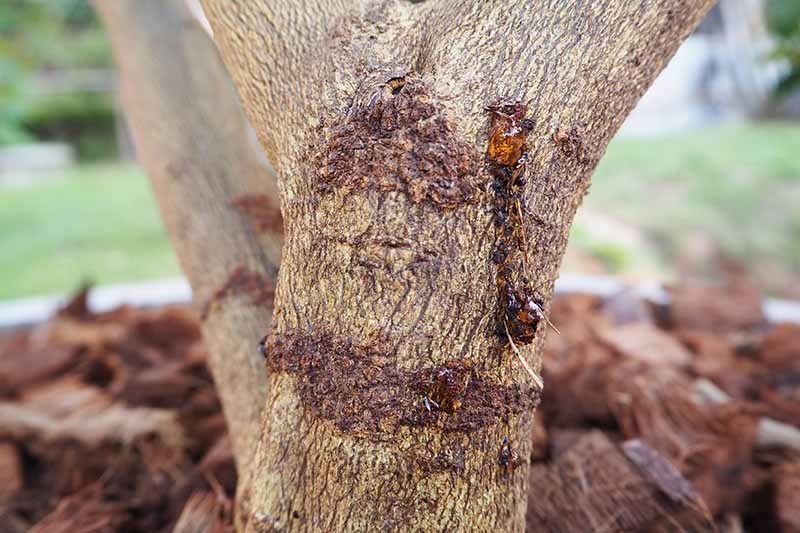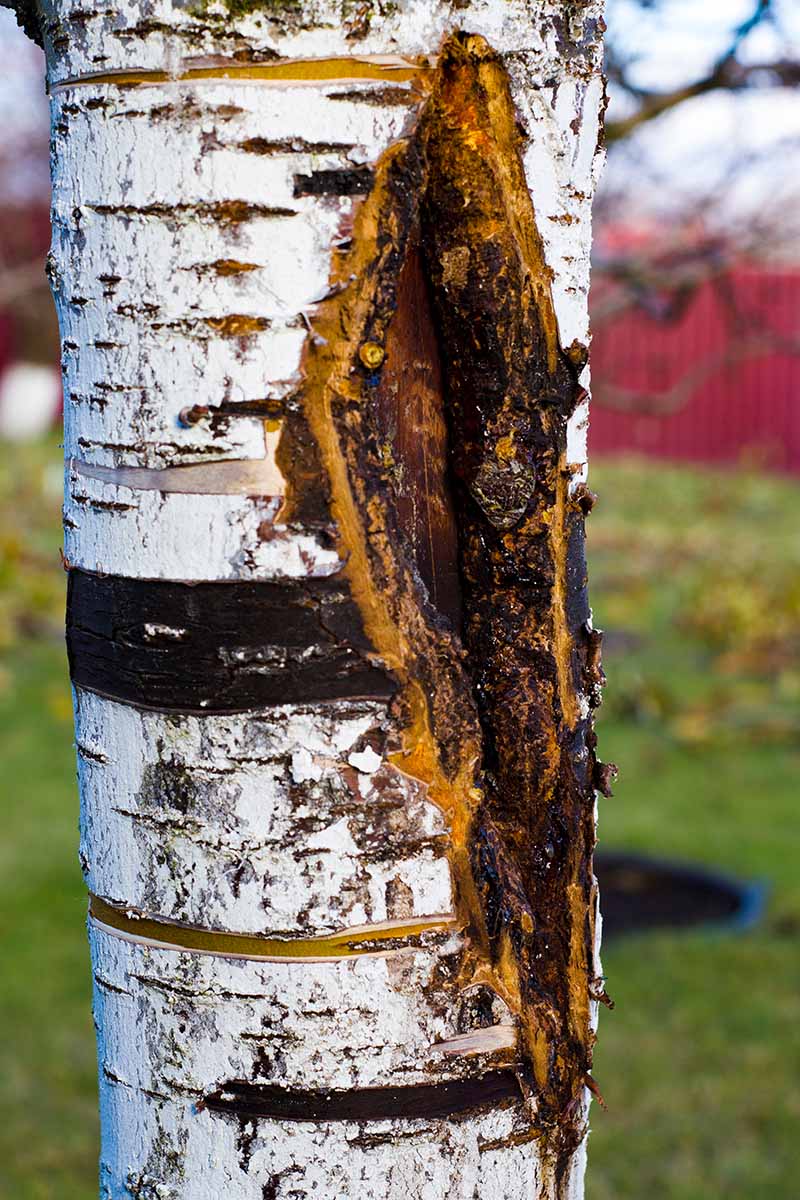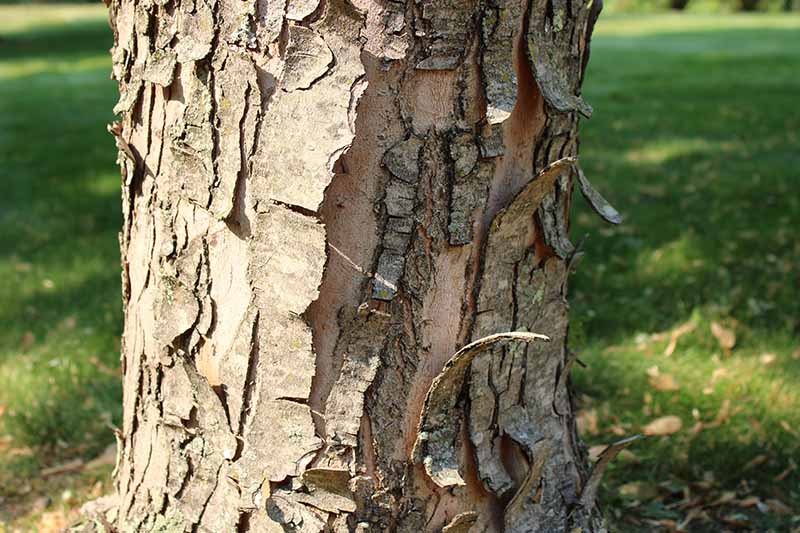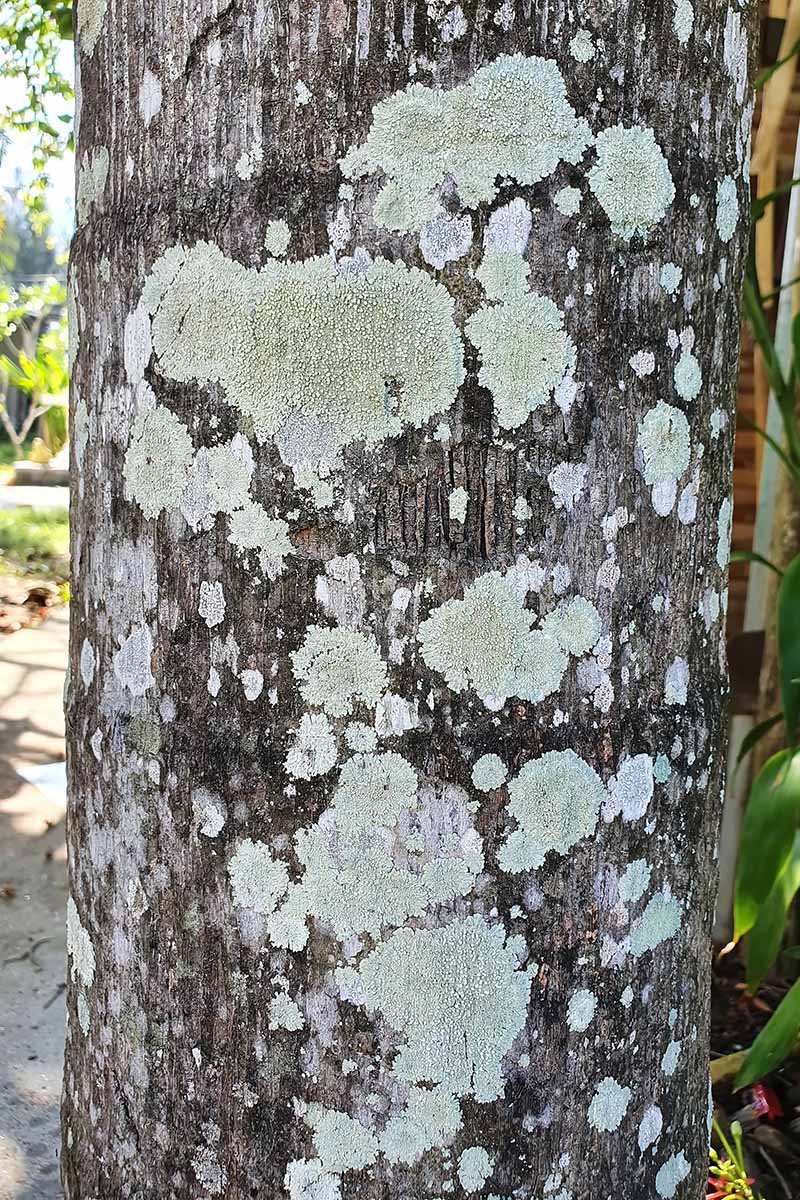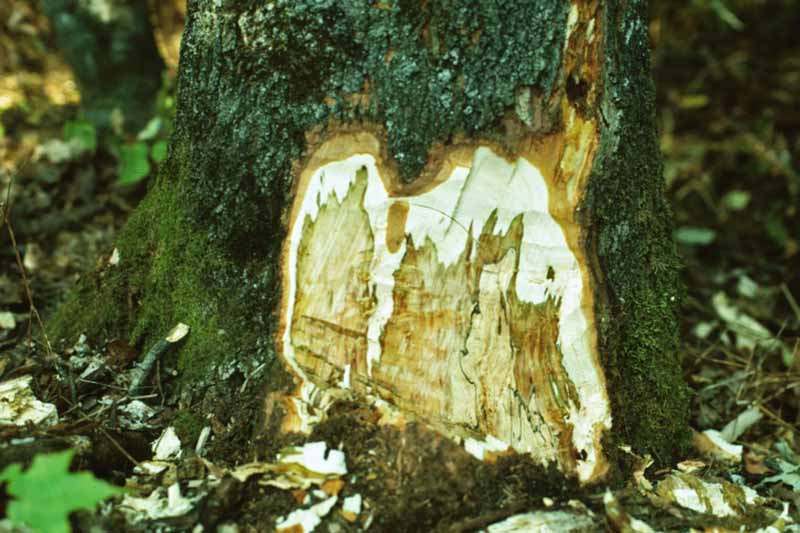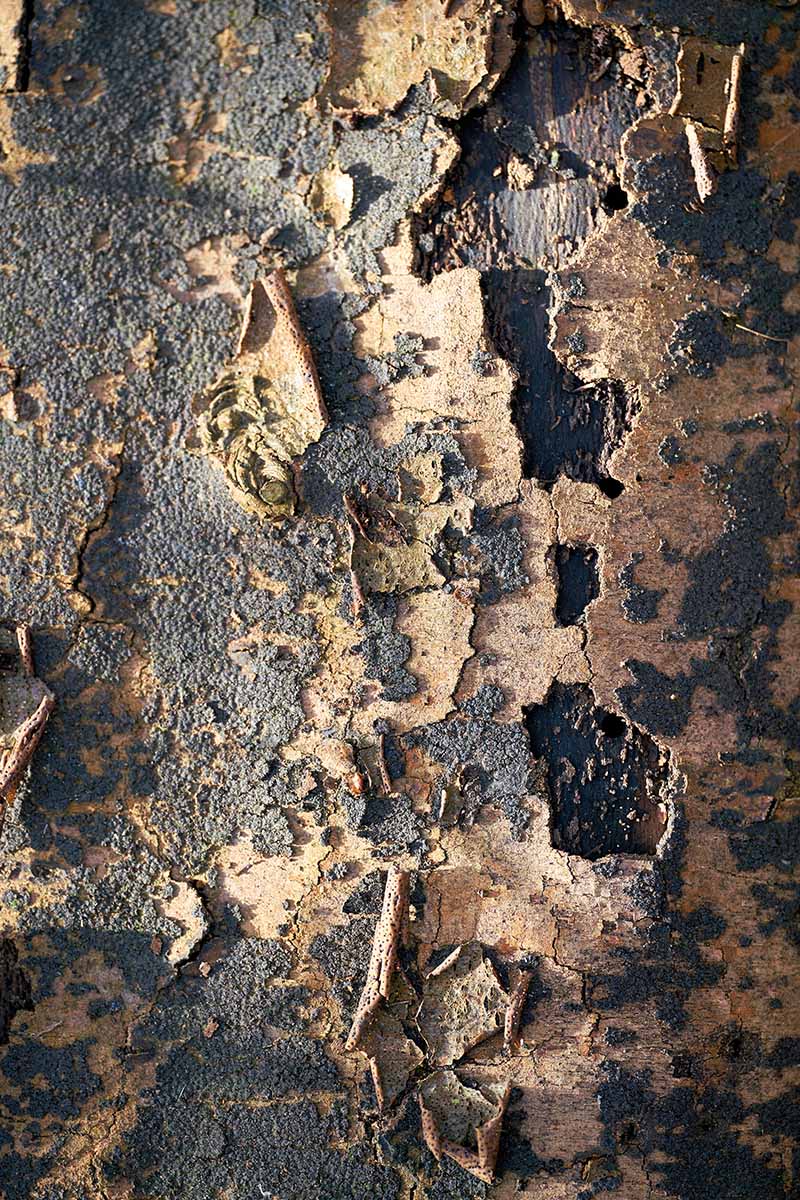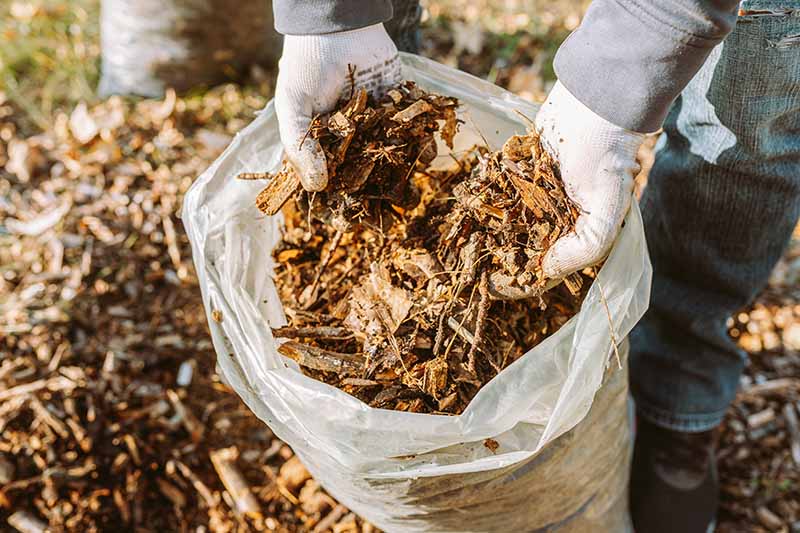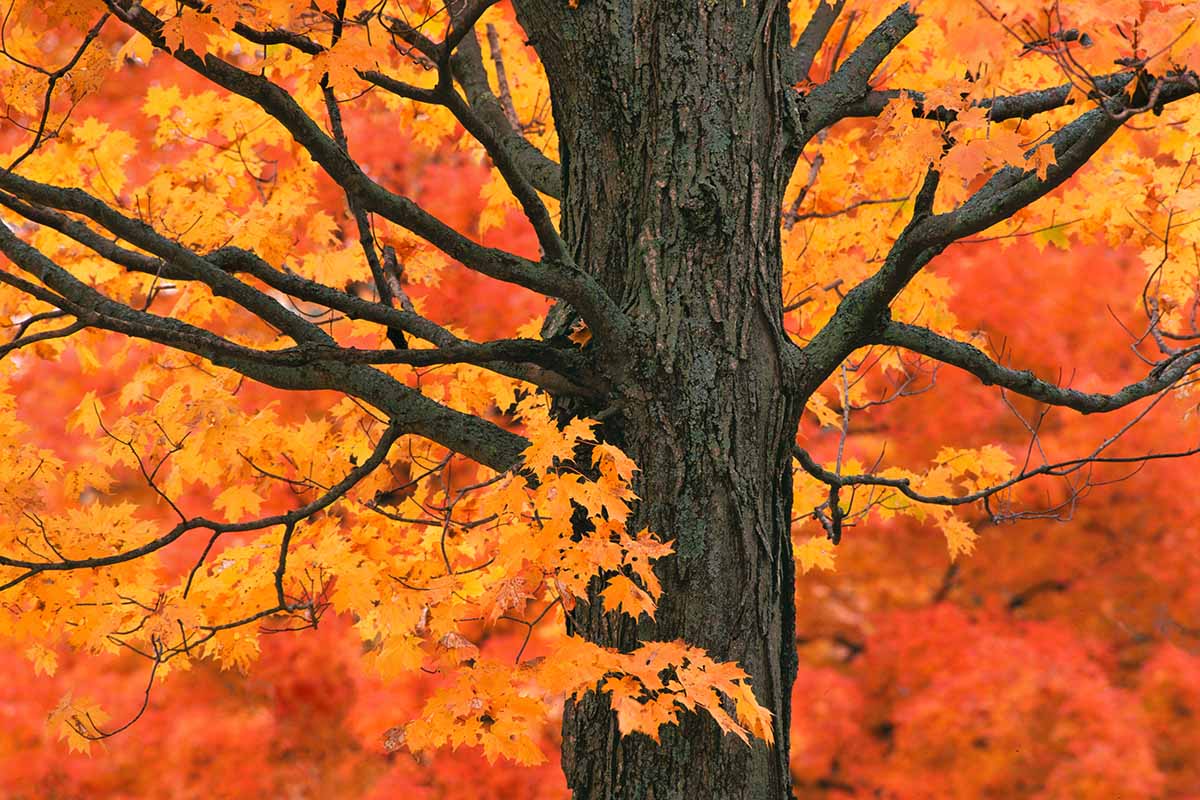In addition to having an iconic shape and providing bountiful shade from the sun, Acer leaves reveal beautiful shades of red, orange, and yellow in autumn. A maple’s foliage is arguably its best feature. But the bark of a maple plays an ornamental supporting role to the leaves, taking center stage once the defoliated trees go dormant. We link to vendors to help you find relevant products. If you buy from one of our links, we may earn a commission. Unfortunately, this beautiful bark isn’t immune to harm. Whether it’s due to a disease, environmental condition, or just faulty cultivation, there are some afflictions that can really take a toll on your trees. In this guide to identifying and treating maple bark diseases, we’ll cover the main threats you should keep an eye out for, how to treat these issues when they come up, and even how to prevent them from occurring in the first place. Here’s a quick peek at the potential bark issues that we’ll cover up ahead:
1. Burr Knots and Galls
Both burr knots and galls look like strange, sickly-looking lumps on tree trunks or branches… but there’s a bit more to them than that.
Burr knots actually form from small adventitious roots or bud tissues that don’t quite form shoots, and tend to grow in warm, humid conditions. They grow larger and more knotted as the tree matures. Although they may look less than attractive on the tree, burr knots are actually prized by woodworkers for the unique swirls and patterns that they contain. Galls, on the other hand, could be more accurately described as tumors, since they’re usually caused by bacteria or infectious material left behind by pests. The infectious agent spurs the gall to grow uncontrollably, and a gall can range in size from a half-inch to more than a foot in diameter. Burr knots can easily break in frosty or windy conditions, provide easy access points for pests and pathogens, and even limit the flow of nutrients through the phloem if they manage to grow together in a mass of multiple knots. Galls also block nutrients from flowing throughout the plant, in addition to looking even more contorted and irregular than burr knots. Both burr knots and galls leave plant growth compromised as they block the healthy movement of nutrients. This tends to manifest as stunted growth or overall decline. To prevent burr knots, it’s imperative to keep the trunk dry. Avoid growing vegetation under the canopy, or wrapping your trunk in a tree guard of any kind. Skipping the former will prevent adjacent evapotranspiration from moistening your tree, while the latter will allow your tree to remain aired out and dry. If it’s too late for preventive care, feel free to cut out burr knots, as long as there are only a few of them. Hey, maybe you’ll end up with some cool lumber to use in woodworking! Galls are best prevented by avoiding injury to your trees and managing pests. You can cut them out if they’re already present on your maple, but if the tree is too far gone you’ll have to dig the plant out. Make sure to burn the roots and stump to prevent further infection. For the treatment of both burr knots and galls, Gallex is a flowable emulsion of 2,4-xylenol and meta-cresol that’s only available commercially… but you can hire a professional arborist who’s qualified to apply this product onto the infected areas of your tree. Gallex targets the unhealthy tissues while leaving the healthy parts of the plant alone.
2. Cankers
Although maybe not as pressing as the canker sores that might sprout in your mouth, cankers on a maple tree are definitely cause for concern. When an open wound becomes infected by a fungal or bacterial pathogen, a canker often results. Cankers tend to have a sunken, irregularly-shaped, brown-to-reddish appearance to them. With varied shapes and sizes, these lesions can show up on branches, trunks, or anywhere that bark appears on the tree. They can also ooze sap and moisture, along with giving off a foul scent. Other than the physical blemishes of the lesions, cankers can cause numerous problems in the foliage such as stunted growth, chlorosis, browning, and curling. As a canker worsens and spreads, the causal pathogen can end up clogging the vascular system of a tree, leading to wilt and branch dieback. Stresses such as environmental extremes, structural injuries, and improper cultivation can all promote conditions favorable to the development of cankers. Fungal cankers contain fruiting bodies, which produce spores that can spread to form new cankers elsewhere, especially in wet or moist conditions. When you slice into these cankers willy-nilly, you could kick-start the spread of fungi – the botanical equivalent of cutting off a hydra’s head. Avoid unnecessarily wounding an Acer, and make sure to frequently sanitize any gardening tools that you use with sprays or soaks in a 70 to 100 percent rubbing alcohol solution. Isopropyl Alcohol Cankers on twigs and branches can be snipped off several inches behind the afflicted segment of the shoot. Make clean pruning cuts above the branch collar, making sure to avoid leaving a stub. Only prune in dry conditions with sterilized tools. It’s important to leave trunk canker removal to the professionals, i.e. certified arborists and professional plant pathologists.
3. Frost Damage
In pop culture, comic book villains such as Captain Cold, Mr. Freeze, and Killer Frost wield the cold with nefarious intentions… and while there aren’t any evildoers walking around the real world with cold guns or cryokinetic abilities, the destructive power of frost is all too real. Especially for maples. A tree’s bark and the underlying wood both contract with decreasing temperatures. When this temperature change is gradual, the bark’s change in size is slow and healthy. However, when temperatures suddenly plummet, the underlying wood doesn’t cool as quickly as the bark does, and… CRACK! Bark splits, and can often do so with a thunderously loud cacophony, leaving the trunk with a vertical and aesthetically obnoxious gash. Along with the visual damage left in its wake, frost damage leaves a tree vulnerable to infectious organisms, since there’s now a gaping slit where the protective bark used to be. Thanks to the inherently weaker structure of injured tissues, there’s also a potential for wound reopening that could occur on days that suddenly turn cold again in the future. Choosing sufficiently hardy maples suitable for growing in your local USDA Hardiness Zone is essential for preventing frost damage – certain species and varieties of Acer are more cold-tolerant than others. You can also drape lightweight coverings like sheets over dwarf cultivars or juvenile plantings, but this requires doing so in the evenings, then removing them in the mornings as temperatures heat up again and before heat damage occurs. You’ll want to flare the cover out like a teepee, since the goal is to trap the earth’s heat, not the plant’s.
4. Lichen
Believe it or not, a lichen isn’t actually a single organism, but rather, it is a combination of multiple life forms that exist in a symbiotic relationship. Around 80 percent of the organism is composed of a fungus, which absorbs water, collects minerals, and provides the majority of a lichen’s form and structure. The remaining 20-or-so percent of the body is an algae or cyanobacteria, which uses photosynthesis to make food for the lichen. Together, these organisms are capable of living in places where neither type could survive on their own. A group composed of at least 13,000 different species worldwide, lichens can be found in many different ecosystems and environmental conditions. Because of their unusual status as jointly biological organisms, their binomial nomenclature is also unique – the name of the fungus goes where the genus name would normally be, and the name of the algae or cyanobacteria goes where the species name would typically appear. For identification, there are three main groups of lichens that describe their appearance: tube-like, leaf-like, and crust-like. In general, lichens from each group appear in various sizes and shapes, and tree-dwelling types as a whole tend to sport shades of pale blue or green. They’re commonly found on the bark of trees, with different species finding certain bark textures easier to adhere to than others. Since lichens prefer full sun exposure, health issues resulting in any degree of defoliation for the tree will increase a lichen’s chances of surviving and thriving on your maple. Therefore, if lichen elimination for aesthetics is the goal, it’s essential to try to prevent or resolve any infections, infestations, or poor cultivation practices that could compromise the leaves. Unfortunately, lichens can also grow on healthy specimens and there aren’t any chemical treatments available that will solely target the lichen. Furthermore, removal by hand will result in excessive damage to the trunk. But in general, they can be indicative of an unhealthy tree that’s vulnerable to disease or insects, and they can also attract large animals such as deer or caribou that like to feed on lichens. The resources that these organisms take from the tree are miniscule, but definitely warrant action for those who want to cultivate a tree that’s entirely free of stress. Thankfully, a clump or two of lichen isn’t the most unaesthetic thing that could happen to the trunk of your maple tree. Plus, a lichen’s presence is often indicative of good air quality!
5. Physical Damage
Tiny organisms and exposures to extreme temperatures aren’t the only stressors that can damage a maple tree’s bark. Lightning strikes, severe winds, animal damage, and even climbing children can do a number on the trunk and branches of an Acer via physical damage. If the damage is to a branch, you’ll need to prune it off with a sterilized tool such as a saw or a pair of loppers. Make the cut below a node or just above the branch collar, depending on whether the branch is salvageable or not. In the case of bark damage, trim away any ragged or torn pieces so that healing sans infection can begin.
6. Sapstreak
Sapstreak is a disease which primarily afflicts sugar maple trees, so I’m especially passionate about this one. Any sickness that could leave my waffles unsweetened demands my full attention. Caused by the fungus Ceratocystis virescens, sapstreak is a fatal disease which enters wounds in a sugar maple’s trunk or root system. Typically, this mostly affects the cut logs or stumps of A. saccharum trees planted as a part of a sugar maple stand – although the disease can affect living trees, as well. This disease has the potential to wipe out large maple syrup operations, yet another threat to a sweet and syrup-glazed breakfast. The sticky C. virescens spores that cause sapstreak disease are vectored by insects such as sap beetles and fruit flies that carry the spores from plant to plant – all of which occurs mostly during the summer months. Symptoms include a streaked and radiating stain in the trunk and roots, along with stunted leaf growth and gradual branch dieback. The progression of symptoms will eventually culminate in the plant’s death three to four years after the onset of infection. Because the stain is internal, the disease has a high potential of going unnoticed until after the tree dies. Prevention is all you can do for your maples when it comes to sapstreak, as there is no known cure. Avoid inflicting wounds to the trunk and roots, and make sure to avoid summertime logging, as that’s a prime time for this disease to spread. Remove trees as they become infected to prevent further spread throughout the grove or landscape.
7. Sooty Bark Disease
Like sapstreak, sooty bark disease is caused by a fungal pathogen – Cryptostroma corticale, to be exact. The fungus makes its way into a maple’s heartwood – the dense, nonliving wood at the core of a tree’s sapwood – after infiltrating and killing smaller branches. Once it reaches the core of the tree, it spreads up and down the trunk, eventually traveling outwards to the bark. And when it has arrived, the disease blisters and kills the bark, along with producing dark, sooty-looking, spore-producing masses directly under the bark, hence the name. Additional symptoms include dead twigs that often appear on a single side of the tree, trunk cankers, leaf wilt, soft rot, and the eventual death of infected maples. It’s important to scout out potential planting spots for signs of this disease such as black mold underneath nearby trees – it could save you a lot of hassle. If sooty bark disease prevention is a high-priority goal of yours, avoid pruning healthy trees during dry summer conditions, since sunburned bark is a prime entry point for C. corticale. If you find an infected tree, remove it and burn it, making sure to keep all parts covered during any necessary transportation from one area of the landscape to another. The best time to do this is during the rainy months, as this disease spreads the most in hot and dry weather conditions.
8. Sunscald
As a pale white dude in Missouri who loves being outside, I know a thing or two about damage from the sun. With every sunburn I receive, it feels as if my genetics are screaming at me to seek shelter, or refrain from going outside unless it’s gray and cloudy out. All of this to say: whenever I see a tree with sunscald, I truly feel for it. Sunscald occurs when high temperatures and harsh sun exposure cause severe bark damage. It’s commonly seen on the trunks of young trees that have yet to develop enough durability to withstand the sun’s rays. Early symptoms include reddish-brown, canker-esque discoloration and slight vertical cracks in the bark. Damaged areas may bleed sap in springtime. As the damage progresses, the cracks will turn into fissures and the bark will start to exfoliate, peeling off of the trunk. A typical strategy for preventing sunscald is to cover juvenile trunks with a lightly-colored and ideally quick-drying material for blocking harsh rays. Common materials include light brown kraft paper, white fabric, or corrugated plastic tree guards. A massive mound of mulch around the trunk also creates a moist entry point for pathogens and pests to infiltrate the now-decaying inner bark tissue. Other than cutting away exfoliated bark, there’s not much you can do for trees that have already been damaged by sunscald. Proper care for an injured tree involves the same practices and methods that you would use for a perfectly healthy specimen, and you can read more about these in our guide to growing maples. Brown Kraft Paper
9. Trunk Suffocation
Mulch can be very beneficial, don’t get me wrong – but only in Goldilocks amounts. If your maple looks like it’s growing out of a volcano made of mulch, then you’ve piled it on a bit too thick and placed it too close to the trunk. Too much mulch that’s piled on essentially suffocates the lower trunk, which leads to the death of inner bark tissue, which limits nutrient transport through the phloem. This weakens roots, leaving them malnourished and unable to take up resources for the tree, which leads to aboveground plant problems. Plus, it can easily overheat, which can prevent necessary cold-hardening come wintertime… or it may straight-up cook the inner bark of the tree in the summer, killing it in the process. To mulch properly, apply two to four inches – less for fine-textured materials, more for coarse textures – in mid-spring, spread in a three- to five-foot radius out from the trunk. Make sure to keep the mulch two inches away from the trunk and root flares. When you know what causes a disease or affliction, preventing it is simple. When you find out what cures an illness, fixing the problem is that much easier. Maple bark may take second fiddle to the foliage, but it’s still an important part of the symphony, aesthetics-wise. Now that you’re able to keep it healthy, you can rest easy, knowing that your maple tree’s full glory is within reach, and your plant is firing on all cylinders. Any questions, remarks, or insightful in-the-trenches experiences can go into the comments section below. And if you’re now jonesing for some more maple guides, get your fix with these articles next:
How and When to Prune Maple TreesHow to Grow and Care for Red Maple TreesHow to Grow and Care for Norway Maple Trees
